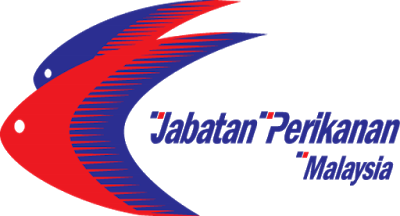Background & Situation Menu
Status and Trends in Fisheries and their Habitats Threats, root causes and barrier analysis Institutional, sectoral and policy context Stakeholder mapping and analysis Baseline analysis and gaps Known Areas of Critical Significance to the Life-Cycles of Fisheries Resources Priority Fisheries Refugia Areas




Establishment of Fisheries Refugia in Malaysia:
Background and Situation Analysis to Support
Institutional, sectoral and policy context
This section discusses the basic instruments and support mechanisms for managing marine habitats and populations. It deals with legal instruments, i.e., national laws that also serve as the basis for local ordinances and for the country’s commitment to international agreements, and institutional arrangements in support of fisheries or coastal resources management initiatives, including the roles of various government agencies, research and academic institutions, and the local government units in monitoring, control, and enforcement. This section also examines patterns of resource ownership, the capacity of human resources and institutions to perform research, monitoring, control, and surveillance, as well as the role of management bodies and stakeholders in managing fisheries and coastal resources.
1. Legal instruments
There are many legal instruments for the management of Malaysia’s fisheries. They include a large number of regulations (stipulating the objectives, functions, and organization of the fisheries sector), norms and standards (standards used in the fisheries sector; safety control of fishing boats; quality control of fishery products; and aquaculture management), duties of fisheries stakeholders (taxation regulations), behaviors on resource users. The Fisheries Act 1985 (Amended 1993) is the main law regarding the control and management of fisheries in maritime and estuarine waters. This Act provides the Minister of agriculture with powers to formulate regulations for the management and conservation of marine resources. A number of fisheries regulations have been made under the Fisheries Act, including
Fisheries (Marine Culture System) Regulations 1990
Fisheries (Maritime) Regulations 1967
Fisheries (Maritime) Regulations (Sarawak)1976
Sabah Fisheries Regulations (1964)
Establishment of Marine Parks & Marine reserves Order 1994
Fisheries (Quality control of Fish for Export to EU) Regulation 2009
Fisheries (Conservation Areas for Sea Cucumber) Regulation 2010
Fisheries (Cockles Conservation & Culture) Regulation 2002
Fisheries (Prohibition of Methods of Fishing) Regulations 1980
Fisheries (Licensing of Local Fishing Vessels) Regulations 1985
Fisheries (Close season for Catching Grouper Fries) Regulation 1996
Fisheries (Prohibited Fishing Methods for Catching Grouper Fries) Regulations 1996
Fisheries (Prohibited Areas) Rantau Abang Regulations 1991
Fisheries (Prohibited Areas) Regulations 1994
Fisheries (Prohibited of Import etc. of Fish) Regulations 1990
Fisheries (Control of Endangered Species of Fish) Regulations 1999
There are also the External Policies Affecting Fisheries:
Exclusive Economic Zone act 1984
The Merchant Shipping Ordinance 1952
Fisheries (Maritime) Regulations (Sarawak)1976
Merchant Shipping Ordinance 1960 (Sabah)
Merchant Shipping Ordinance 1960 (Sarawak)
Merchant Shipping (Oil Pollution) Act (1994)
The Envoronment Quality Act 1974 (Amended 1985)
The Continental Shelf Act 1966
Wildlife Protection Act 2010
National Parks Act 1980
Malaysian Maritime Enforcement Agency (MMEA) Act 2004
Customs Act 1967 (amended in 1988)
2. Institutional arrangements (research, monitoring, control, and enforcement)
The Department of Fisheries (DOF) is the main agency responsible for the development of the fisheries industry besides the Fisheries Development Authority (LKIM). Both agencies are under the administration of the Ministry of Agriculture and Agro-based Industries. The specific functions of the DOF include policy and program formulation/implementation; research, management, and evaluation of fisheries resources; provision of technical and infrastructural facilities; compilation and dissemination of fisheries statistic; licensing and enforcement of marine fisheries; and training of fishermen.
The Fisheries Research Institute of the Department of Fisheries undertakes fisheries research with its headquarters located in Penang. It has its Freshwater Research Branch situated in Batu Berendam, Malacca; Brackish-water Branch in Gelang Patah, Johore; Marine Fisheries Research Development and Management Division (MFRDMD/SEAFDEC) in Chendering, Kuala Trengganu; East Coast Peninsular Malaysia Aquaculture Branch in Tanjung Demong; Fisheries Research Centre, Bintawa, Sarawak; and it's National Prawn Fry Production and Research Centre in Pulau Sayak, Kedah. The headquarters in Penang is responsible for research on marine capture fisheries, marine aquaculture, and ecology, while the branches specialize in their respective areas of research.
LKIM was established as a quasi-governmental body under the LKIM Act 1971. LKIM was originally instituted as an additional development funding authority for the fisheries industry to spur commercialization of the sector. The primary functions of LKIM are to: increase fish production; raise the income of fishers; provide and supervise the effective use of credit for the adoption of new fishing technology and for the investment in related fisheries industry subsectors; and promote, facilitate and supervise the fishers organizations.
There is also the Department of Environment (DOE) whose main function is to prevent, eliminate, control pollution and improve the environment, consistent with the purposes of the Environmental Quality Act 1974 and the regulations thereunder DOE is also responsible for the implementation of the resolutions decided by the conventions of the international environment such as Vienna Convention for the protection of the Ozone Layer 1985, Montreal Protocol on Substances That Deplete the Ozone Layer, 1987, the Basel Convention on the Transboundary Movement of Hazardous Waste and Their Disposal Act 1989 and other areas while the success of programs of bilateral cooperation and multilateral cooperation between Indonesia, Singapore, and other ASEAN countries on environmental management
Fisheries management in Malaysia is governed by the Fisheries Act 1985 and its subsidiary regulations. However, most fisheries enforcement in Malaysia is now undertaken by the Malaysian Maritime Enforcement Agency (MMEA), and this is especially so beyond three nautical miles from the shoreline. The DOF and Marine Police also undertake enforcement activities. The following relevant matters are regulated under the Fisheries Act 1985:
Provision for the licensing fishing vessels
Prohibition or control on the importation and exportation of live fish
Registration of local fishing vessels and the issuance of appropriate documentation
Fisheries offenses and offenses under the act
Condition in license and direction
License and respect of local fishing vessels, fishing stakes, fishing appliances, fish aggregation device or marine culture system
Period of validity of license and-transferability
Fishing by foreign fishing vessels in Malaysian Fisheries Waters
Bringing into or having possession in Malaysian fisheries waters fish taken or received from foreign fishing vessels
Classification of vessels, and
Enforcement
The Department of Fisheries Malaysia has been tasked to manage the fisheries resources through a 5-year plan based on the trust areas including socioeconomic projects to infrastructure development in-line with action plans stated in the Agro-Food Policy 2011-2020.